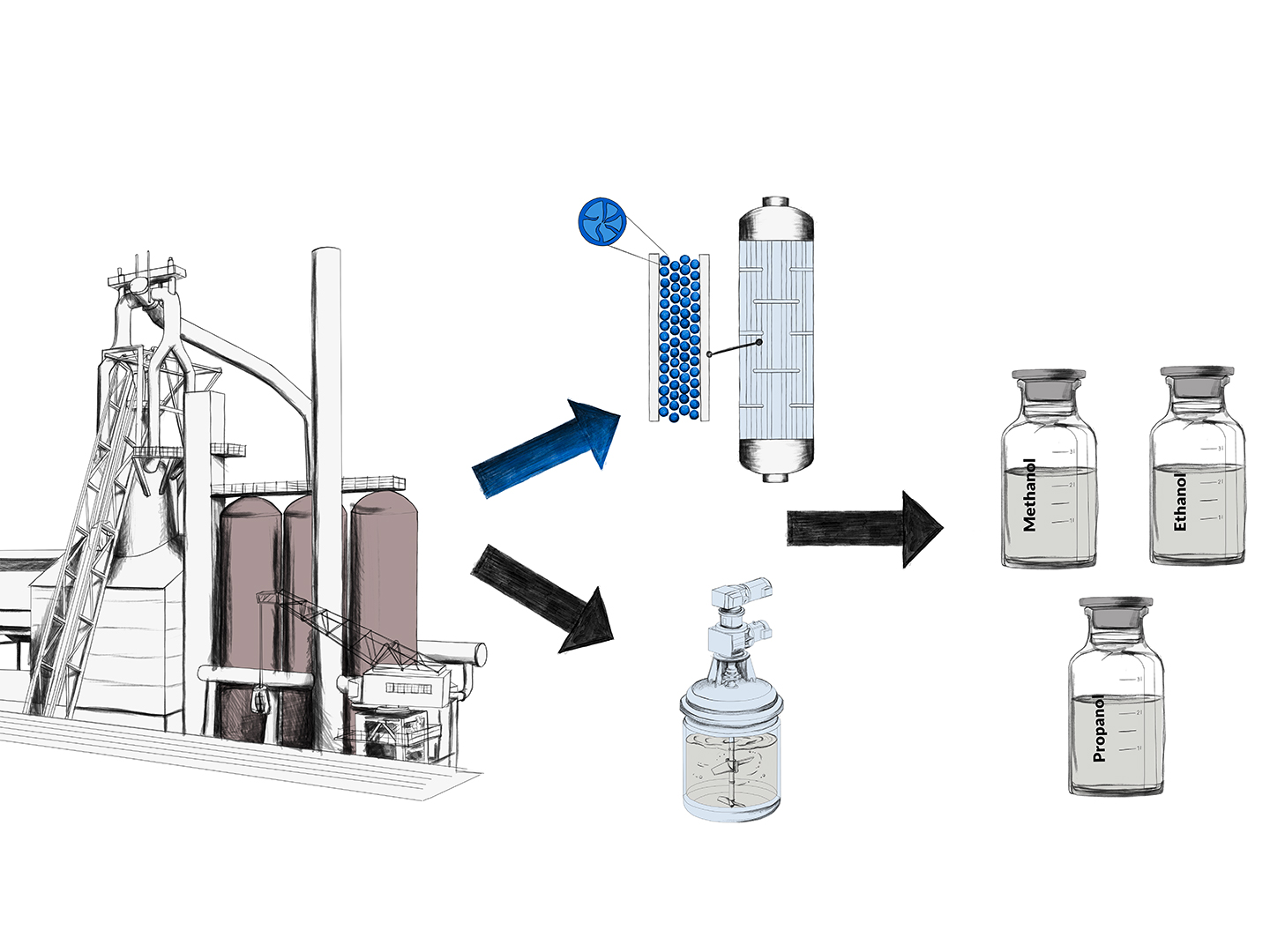
The project aims to develop a process to use coupling gases from a steel mill to produce C2+ alcohols, which are used as fuels and chemical intermediate products. Heterogeneous and homogeneous catalytic process concepts are developed and their cost-effectiveness and sustainability analyzed.
| Use of coupling gases from a steel mill with a simultaneous reduction in primary raw material consumption and reduction of specific CO2 emissions. |
Tasks
The focus of the project is the development of catalysts and processes for the selective conversion of carbon monoxide and carbon dioxide with hydrogen into C2+ alcohols. These investigations are carried out in the context of an overall process for the material and economic utilization of coupling gases from a steel mill with a simultaneous reduction in primary raw material consumption and reduction of specific CO2 emissions.
The project tasks include the identification of suitable homogeneous and heterogeneous catalysts, their optimization, characterization, and the transfer of catalyst production on an industrial scale. The catalytic testing, the kinetic modeling, the reactor and process simulation are the basis of process development and economic analysis. The sustainability of the overall process is assessed in a life-cycle analysis.
Aims
The aim of the project is to develop an overall economic process for the catalytic utilization of syngas-treated coupling gases from a steelworks for subsequent direct conversion into C2+ alcohols. The use of alcohols as fuels and as a starting point for other chemical components reduces the consumption of primary raw materials. Conventional raw material sources such as natural gas for the supply of syngas are replaced by coupling gases. At the same time, the fixation of carbon in the usable products reduces the specific CO2 emissions of the steelworks. The use of the alcohols produced as fuels in this way leads to a substitution of the corresponding amount of conventional fuel and thus also the corresponding amount of crude oil. In addition to ethanol (C2), which is currently blended with conventional fuels as “E10“, the product range targeted for the development also includes butanol (C4), which is discussed as a fuel substitute due to its higher energy density and better miscibility with conventional fuel components. Another exploitation option is the already established upgrading of alcohols to chemical secondary products (e.g., polyethylene, polypropylene, and vinyl acetate).
 Fraunhofer Institute for Environmental, Safety and Energy Technology UMSICHT
Fraunhofer Institute for Environmental, Safety and Energy Technology UMSICHT